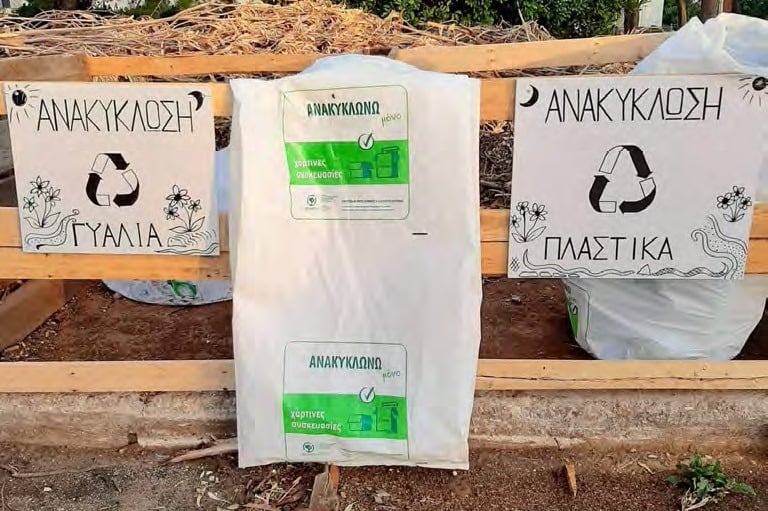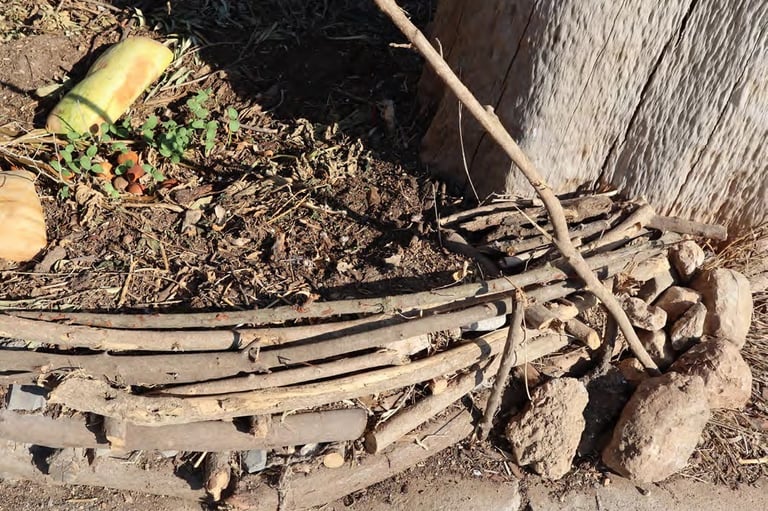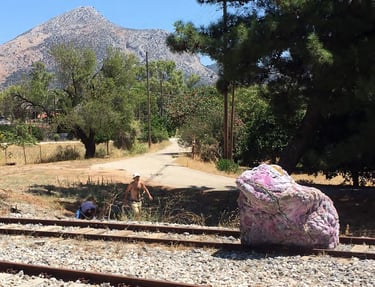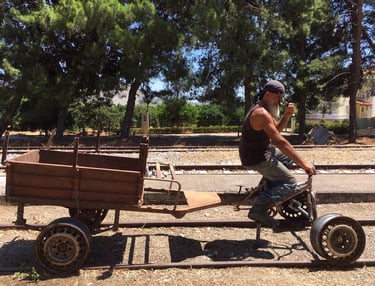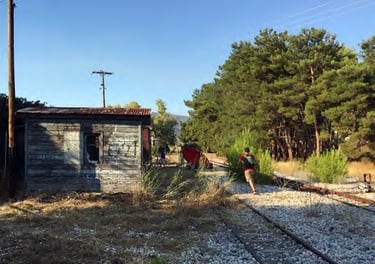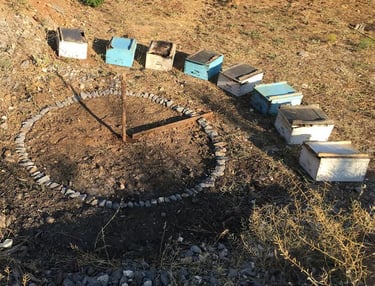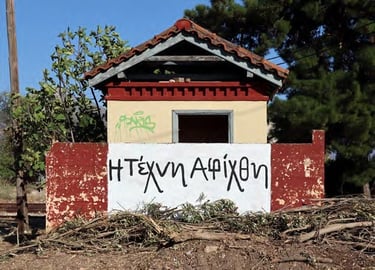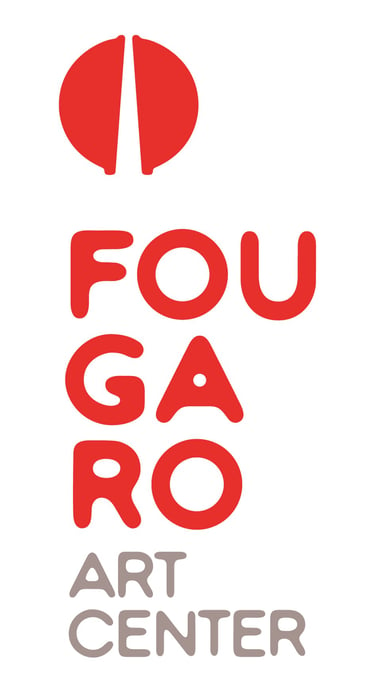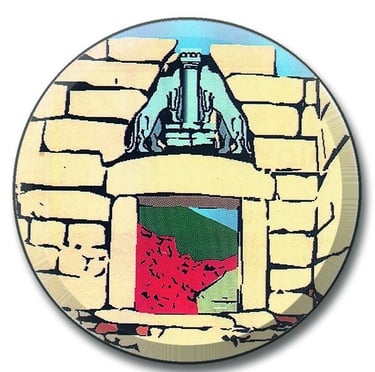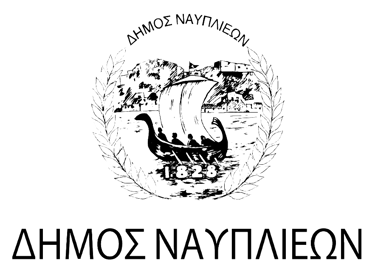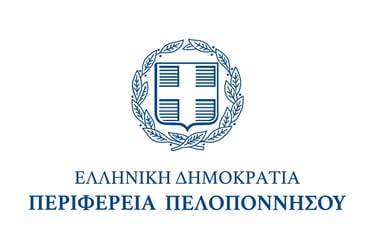Mycenae Station
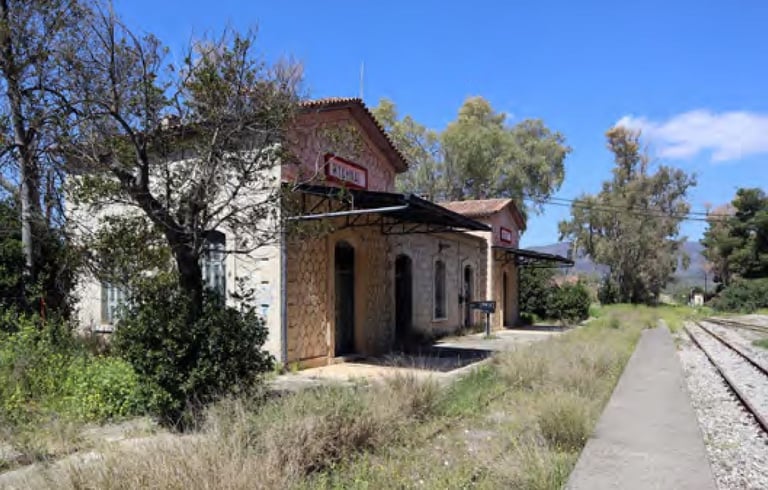

New centre
of the world
For the "Fíchti Art 2022 Festival", the participation of architecture was requested, with a particular focus on the issue of waste and its reuse. The response extended the notion of reuse of waste to that of any obsolete thing (or being), out of use. Reuse is in fact a way of reviving, of giving a "new job" to what exists and is no longer "used". It is therefore a way of intervening on what exists, of re-energising it or of bringing it back to life, without consuming new material and without having any environmental impact. Ideally, it is also a way of bringing about a new life which, in itself, no longer contains the discomfort of consuming and discarding but that of living and recycling.
This approach to architecture therefore aims not only at sustainability but at "self-sustainability", i.e. a global system that settles and functions naturally, from below (by the users and inhabitants), and not from above (imposed and fixed by the architect or by political decision). In reuse, the architect is a mediator between existing things, between humans and with non-humans (flora and fauna) to lead to a new ecosystem; his role is to produce an impact or impacts leading to a system that will develop by itself.
The result is a laboratory of the future. We will see below that the beginning of a "third village" may have been set up, a village that governs itself with the awareness of belonging to a planet that must be preserved for future generations.
The Project
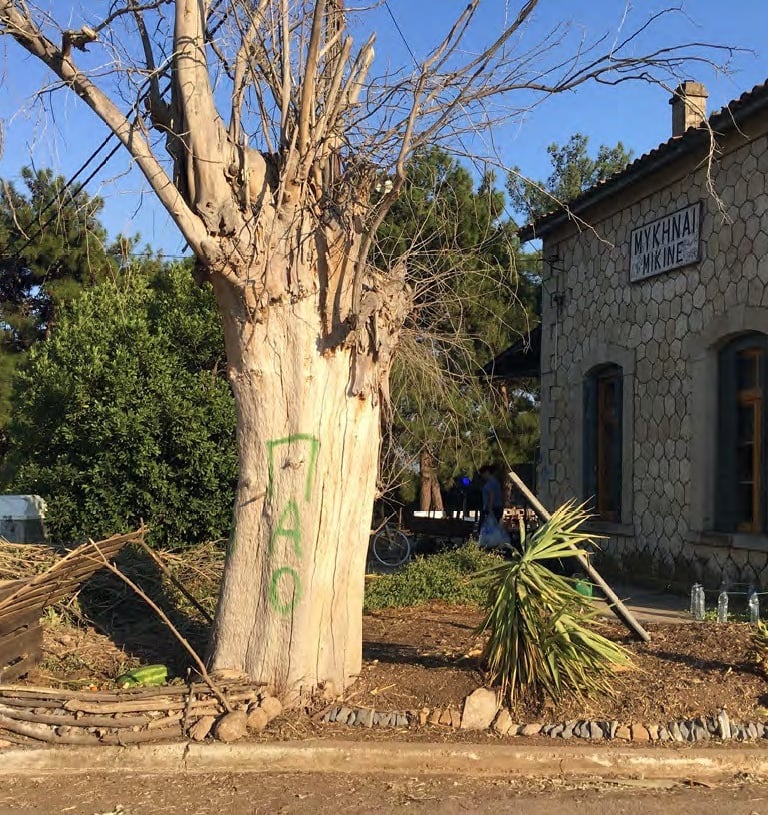

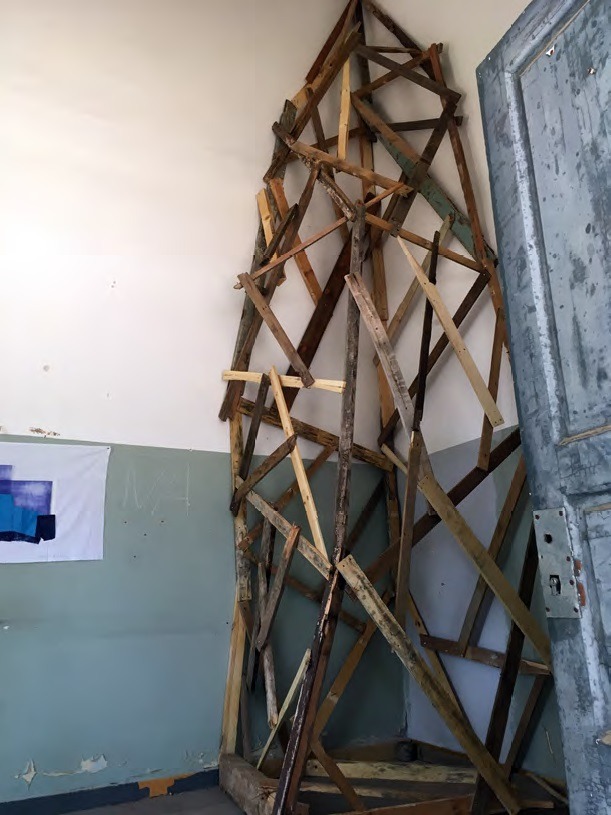

Mycenae Station
The railways in the Peloponnese, single track and metric gauge, formed a ring of 731 km which, from Corinth, connected all the cities of the peninsula (except Sparta and Gythio). The first section, Corinth-Argos via Mycenae, was put into service in 1886. The railway line from Corinth to Kalamata, 236 km long, was rebuilt in 2004-2009 but was taken out of service in January 2011. The station of Mycenae is now abandoned.
Its platform-side façade bears its name: Μυκηναι in Greek (Μυκῆναι - Mykênai in ancient Greek) and the pronunciation MIKINE in the Latin alphabet. In its early days, the station allowed foreign travellers to reach the archaeological site of Mycenae :
«Up there, against the grey and desolate mountains that rise up to 800 metres, we catch a glimpse of Mycenae.
The train stops in front of a small house which has the honour of being the "station of Mycenae".
In the surrounding area, the countryside is depopulated, the trees are very rare, the fields unkempt.
Deceived by the transparency of the air, we thought we would arrive in a few minutes, but it takes nearly an hour to reach the intermediate village, Kharvati - through this "land of thirst", as they used to say in Homer's time. »
The village of Charváti mentioned here was renamed Mycenae (Μυκήνες - Mykínes) as the city of four thousand years ago and which gave its name to the Mycenaean civilisation that dominated the eastern Mediterranean for a time. Around the station, the present-day village of Fíchti developed.
The station is a fine example of a small 19th-century station:
a symmetrical facade with two wings designed to accommodate the public (a passenger room to the north with a ticket office and a baggage room to the south) and a central body with the stationmaster's office (opening onto the ticket office inside) and his official accommodation (two rooms in the facade and, behind the baggage room, a kitchen and a toilet room)

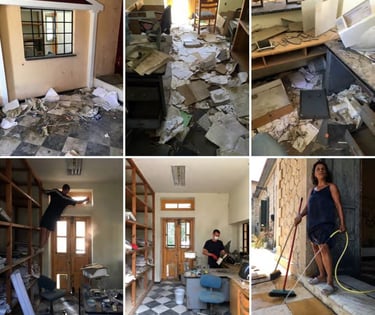
The cessation of railway activities seems to have been precipitated. In any case, the station master's office was abandoned with all its contents: furniture, computer, archives... And, of course, in twelve years, the isolated building along the railway line has been visited and used anonymously.
The first objective of the intensive workshop (24-26 July 2022) was to restore the dignity of the station, to bring order. To save the archive papers that were scattered throughout the rooms and to sort out the other objects, without throwing anything away. These fragments of life were clues to reconstruct the story.
- The papers and office equipment were returned to the stationmaster's office.
Their fine classification and study will allow the work of a future researcher.
- The fragments of the computer and printer were reassembled (like a jigsaw puzzle) and placed back in the office to freeze time and to make this room the museum of the station, visible from the outside (window or counter).
- Other fragments were also stored in the office, such as railway parts (railroad tie nails, etc.), condom bags found in the station master's flat, a honeycomb, etc. All these clues trace the life of a building and its surroundings, which is not limited to the technical dimension of the passing train, but which has hosted various practices (human or non-human).
This is what makes it a place.
A dignified place

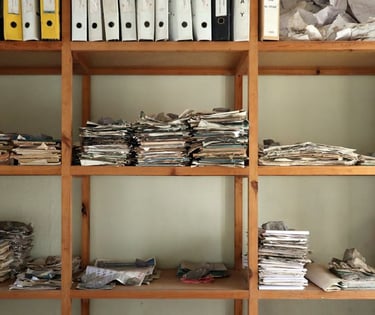

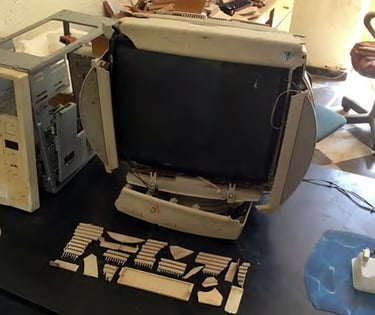
There is no such thing as "waste". In the 21st century, this notion can no longer exist. In a dignified place, waste is no longer produced: firstly, it is reused (a glass and not a disposable cup), or it is re-used (to build a new object and meet a new use) or, in the final situation, it is recycled.
- The shards of broken glass are gathered at the foot of their window.
- Stones are assembled with soil found on site to build a staircase. Pieces of pallets are used to build a structure.
- Tree branches waiting to be used (to build a hut or to compost) are arranged in piles that emphasise the neighbouring mountain landscape in harmony.
- Plastic bottles are collected and - if not reused - stored in an enclosure for recycling.
- At the same time, a compost area is prepared on the site where the inhabitants can deposit their vegetable waste and thus produce fertiliser for a future vegetable garden.
- The former kitchen of the dwelling becomes a stock of materials for a future workshop.
- The plants are protected from human inattention.
A place to live
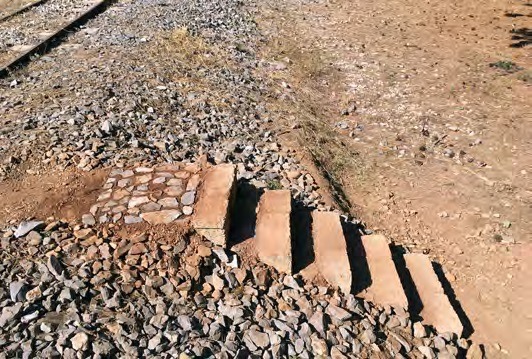

After two days of work, the artists arrived and brought their vision. Although each work produced is individual, the whole constitutes a loop which extends the starting site and includes, in addition to the station itself, the railway line and the pine forest to the south. These pine trees add to the notion of the train's mobility (speed) that of participation in a plant world (slowness).
This loop is not only a route for the Festival but also an opportunity for the inhabitants to reappropriate the station. It is the origin of the village of Fíchti and every adult has memories of it, it is their connection to the rest of the world, whether it be Athens or Nafplio and the beach. The railway station of Mycenae means Fíchti, it is the only public building, it can become again the building that everyone identifies with and a place for communal meetings.
With new activities developing, the station can become a place where the community debates and makes decisions to resist future crises.
Unlike a non-place like an airport or a shopping centre, a place is "identity, relationship and history". With such qualities of place, the Mycenae station thus becomes a centre of the world. Not only a local world but also a global world:
With the recovered train, the West and the East can be reached and they can reach Mycenae again.
A hospitable place
Carrier of local identity
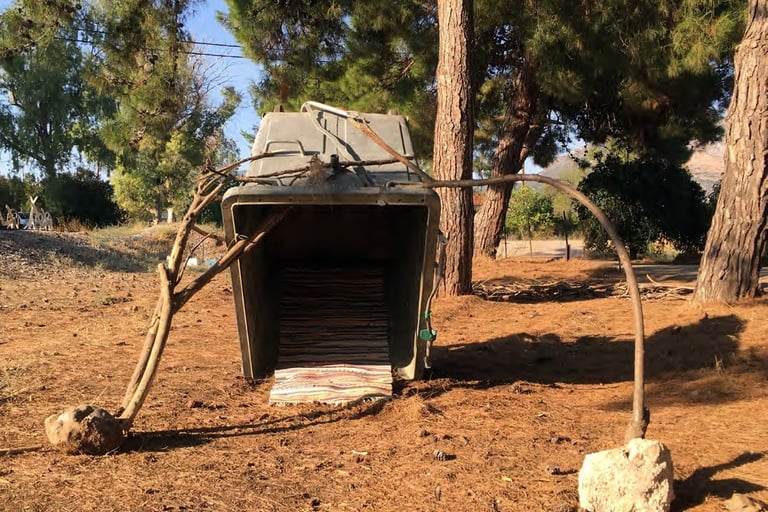



Seeds germinate in the compost.
After the festival
Residents are starting to sort glass and plastic for recycling.
